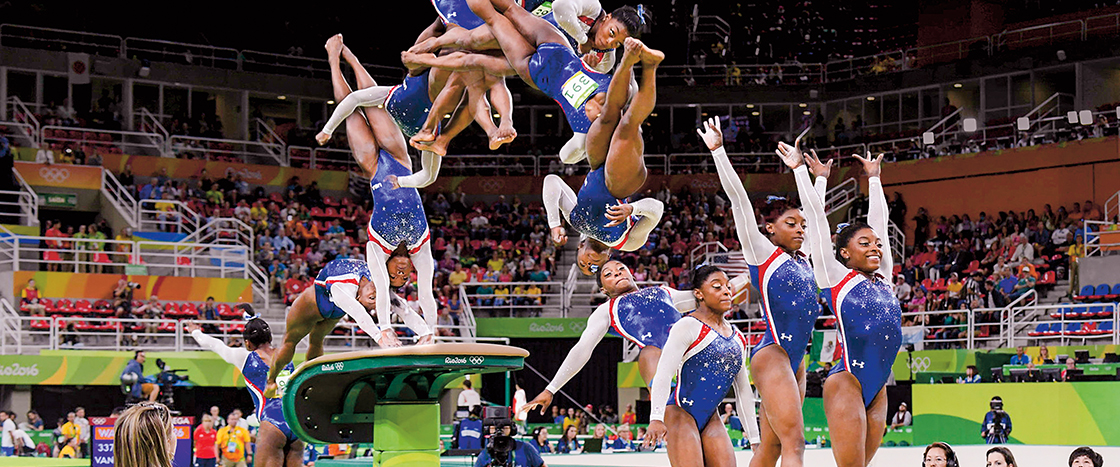Gymnast Simone Biles bounds down the mat, tumbles, and launches off a springboard. She plants her hands on an apparatus called a vault, then flips and twists through the air. She sticks the landing! Gymnastics routines like this one are scored by a panel of eight judges. They award points for technique, artistry, and difficulty.
The judges have a tough job! Gymnasts move quickly, and judges must score routines seconds after they’re performed. Tiny mistakes—like if an athlete’s legs are at the wrong angle—can be hard to spot.
The Japanese company Fujitsu has designed a new robot to make judging more accurate. The device, called the judging support system, precisely measures gymnasts’ movements in real time. “Our goal is for gymnasts to receive a fair score,” says engineer Takehiko Ishii, who worked on the robot.
Gymnast Simone Biles runs down a long mat. She tumbles. Then she jumps off a springboard. She plants her hands on a raised bench. It’s called a vault. Then she flips and twists through the air. She sticks the landing! A panel of eight judges score her routine. They award points for skill, creativity, and difficulty.
The judges have a tough job! Gymnasts move quickly. Judges have to give a score seconds after routines are finished. Tiny mistakes can be hard to spot. One example is an athlete’s legs that are at the wrong angle.
But a new robot could help. The Japanese company Fujitsu designed it. The device is called the judging support system. It precisely measures gymnasts as they move. “Our goal is for gymnasts to receive a fair score,” says Takehiko Ishii. He’s an engineer. He worked on the robot.

